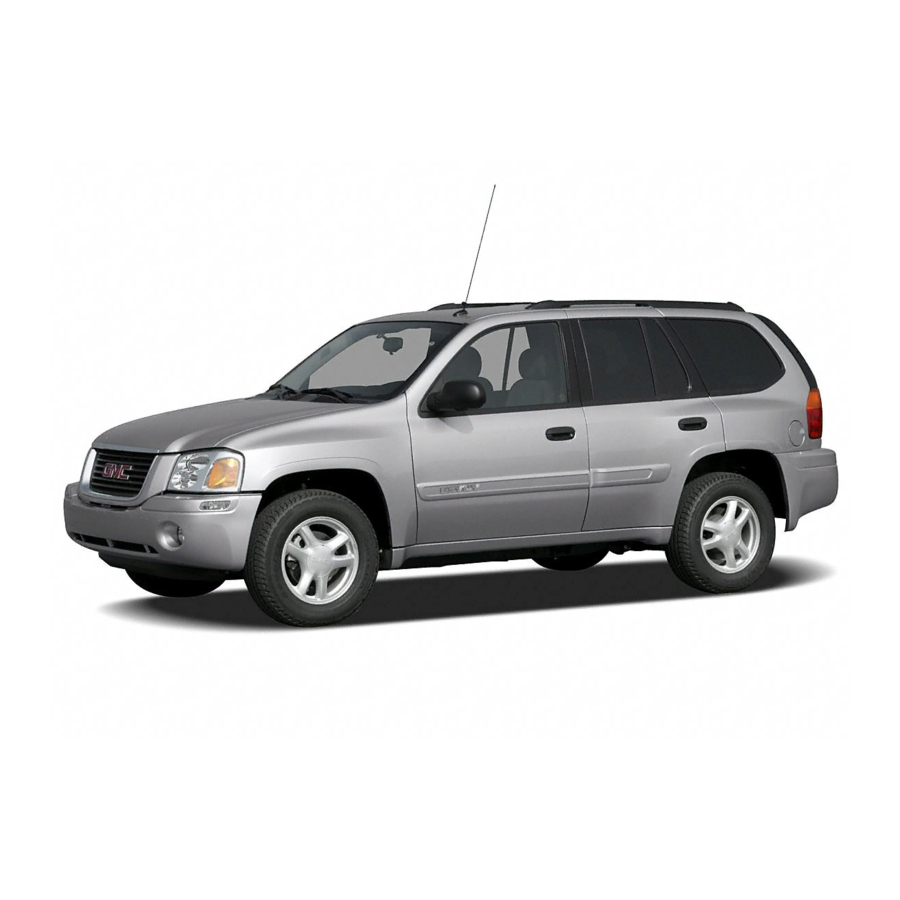
GMC 2005 Envoy Owner's Manual
General motors company 2005 envoy automobile owner manual
Hide thumbs
Also See for 2005 GMC Envoy:
- Owner's manual (503 pages) ,
- Getting to know manual (20 pages) ,
- Battery changing instructions (2 pages)
Table of Contents
Advertisement
2005 GMC Envoy, Envoy XL, Envoy Denali,
and Envoy XL Denali Owner Manual
Seats and Restraint Systems ........................... 1-1
Front Seats
............................................... 1-3
Rear Seats
............................................... 1-9
Safety Belts
............................................. 1-12
Child Restraints
....................................... 1-31
Airbag System
......................................... 1-52
Restraint System Check
Features and Controls ..................................... 2-1
Keys
........................................................ 2-3
Doors and Locks
....................................... 2-8
Windows
................................................. 2-14
Theft-Deterrent Systems
Starting and Operating Your Vehicle
Mirrors
.................................................... 2-37
®
OnStar
System
...................................... 2-47
®
HomeLink
Wireless Control System
Storage Areas
......................................... 2-53
Sunroof
.................................................. 2-60
Vehicle Personalization
Instrument Panel ............................................. 3-1
Instrument Panel Overview
Climate Controls
...................................... 3-20
Warning Lights, Gages, and Indicators
Driver Information Center (DIC)
............................ 1-67
............................ 2-17
........... 2-19
........... 2-49
............................. 2-60
.......................... 3-4
........ 3-31
.................. 3-49
Audio System(s)
....................................... 3-62
Driving Your Vehicle ....................................... 4-1
Your Driving, the Road, and Your Vehicle
Towing
................................................... 4-50
Service and Appearance Care .......................... 5-1
Service
..................................................... 5-3
Fuel
......................................................... 5-5
Checking Things Under the Hood
Rear Axle
............................................... 5-43
Four-Wheel Drive
..................................... 5-44
Front Axle
............................................... 5-44
Bulb Replacement
Windshield Wiper Blade Replacement
Tires
...................................................... 5-50
Appearance Care
..................................... 5-81
Vehicle Identification
Electrical System
...................................... 5-91
Capacities and Specifications
Maintenance Schedule ..................................... 6-1
Maintenance Schedule
Customer Assistance and Information .............. 7-1
Customer Assistance and Information
Reporting Safety Defects
Index ................................................................ 1
M
............... 5-10
.................................... 5-45
......... 5-48
................................. 5-90
................... 5-103
................................ 6-2
........... 7-2
........................... 7-10
..... 4-2
Advertisement
Chapters
Table of Contents
















Need help?
Do you have a question about the 2005 GMC Envoy and is the answer not in the manual?
Questions and answers